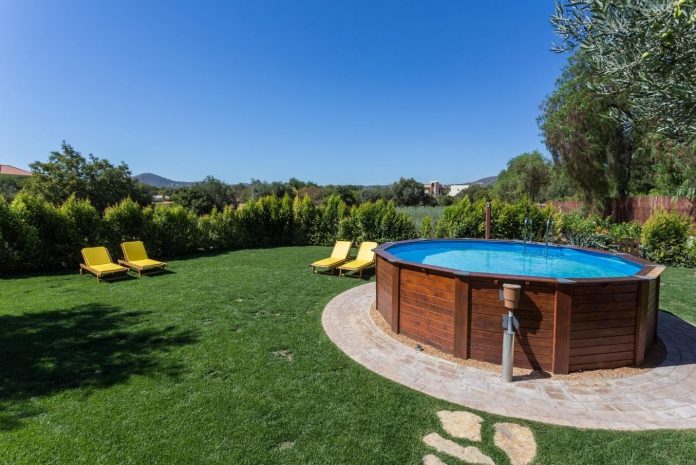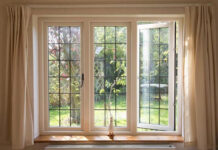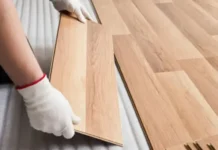Did you know that the number of households in the US that had a spa, hot tub, or pool installed in 2019 was over 911,000—and that this number of households was over 922,000 in 2020?
If you’re thinking of installing a pool yourself, then you might have questions about how to install a pool. You might be asking yourself questions such as:
“What types of pools are there?”
“What factors impact the price of installing a pool?”
“Are there any steps I have to take before I install a pool?”
“How do I go about installing a pool?”
If you don’t have the answers to these questions, you might feel overwhelmed. There’s a lot of information you need to have before you make this financial investment. You might also be stressed, depending on what your financial situation is like.
That’s why we’ve put together this guide. Once you know everything you need to about installing a pool, you can choose the right type of pool at the right price for you. Finally, you can spend your summers enjoying the benefits of having a pool. Read on to learn more.
What Types of Home Pools Are There?
When you’re installing a pool in your backyard, there are different options when it comes to pool types. It’s important to know what these types are both so you can decide on the best one and so you can figure out which types you can afford.
These types are concrete pools, vinyl-lined pools, fiberglass pools, and above ground pools.
Concrete Pools
Concrete pools are the most popular pools that people get installed in their homes. Because concrete is poured in order to make these pools, they can be any depth, shape, or depth. If you want a pool with a fun shape or one that will fit the complex layout of your backyard, concrete is the way to go.
The process of installing a concrete pool, however, is a bit longer than with other pools.
This is because of how long it takes to put together the walls that are steel-reinforced, after which the concrete is shot into it with a gun.
Then, the concrete has to dry, after which the pool is painted, then tiled or finished. Because this is such a lengthy process, you’ll have to wait between three and twelve weeks for it to be ready for use.
This said, concrete pools can last a long time, up to fifty years. Additionally, if you want to make any changes to your concrete pool, you can. You can’t do this with the other pool types.
Vinyl Pools
The construction of a vinyl pool involves digging a hole in your backyard, after which you put in a frame made of non-corrosive polymer, aluminum, or steel. Over this frame, you install a vinyl liner. These come in a pre-planned shape.
Shape options are freeform, L-shaped, and rectangular, depending on the manufacturer.
Usually, your vinyl pool should be ready in one to three weeks. This is a huge positive, especially if you’re building it up in the weeks leading up to summer.
However, there is a drawback to vinyl pools. The liner can be punctured. To prevent this from happening, we suggest you invest in a thicker liner that’s between 20 and 33 mm thick.
Fiberglass Pools
The last type of pool we’ll review is the fiberglass pool. These pools are made outside of your home in a factory, after which a crane drops them into the area where you’ve excavated the yard for the pool. For this reason, you can install a fiberglass pool incredibly quickly—even in three days!
Because of the finishing gel that’s applied to fiberglass pools, these pools are stain-resistant and durable.
However, there are fewer options in terms of shape. So if you have a backyard with a complex shape, this isn’t the best choice.
Above Ground Pools
Above ground pools may not look as nice as in-ground ones, and you’ll need a ladder to hop into them, which is less fun than diving in. However, these are useful in that you can avoid excavating your yard. If you’re not sure about installing a pool permanently, this is a great choice.
How Much Does a Pool Usually Cost?
The cost of a pool can vary significantly. The range of cost is between $200 and $78,000. The reason for such a broad range? Above ground pools are far cheaper than those you install into the ground of your backyard. In this section, we’ll cover the costs of both types, as well as additional costs you may have to pay for.
Above Ground Pool Versus In-Ground Pool Cost
For an above ground pool, the cost is usually between $200 and $6,000. The reason they’re so much cheaper than in-ground pools is that you won’t have to pay for the excavation, which is the largest cost you’ll be paying when you install an in-ground pool.
As for in-ground pools, their cost usually falls between $14,961 and $21,649. The reason for this high price is not only because of the excavation but also because of the costs of hiring construction workers to install it.
Preparations, such as lining the area first, will also cost a pretty penny.
Pool Accessories and Furniture
Pool accessories will also add to your pool installation budget. These are optional, but they’ll make your pool more fun. If you have kids, it might be worth installing some accessories. Accessories include slides, a diving board, fencing, pool cover, pool enclosure and lights.
Additionally, you might want to buy some furniture to place by the poolside. After all, it’s nice to have somewhere to relax between dips in the water.
A table by the pool and a chaise lounge to lie back on in the sun is a great investment. If you’re looking for the perfect poolside furniture, view these outdoor chaise lounges.
Maintenance and Repairs
Other costs related to home pools are maintenance and repairs. Generally speaking, maintenance costs $250 and can be a recurring expense. Usually, maintenance requires removing debris from the pool, repairing the heating system, and cleaning it.
Other types of pool maintenance include:
- Reopening
- Winterizing
- Detecting leaks
- Monitoring of water levels
- Cleaning the filters
- Brushing the surface
- Vacuuming the surface
- Skimming
When you have your pool installed, ask the people installing it what type of maintenance you should expect to do, and how often. The company you buy your pool from might also do maintenance—but keep in mind that, if you want to save money, you can do much of this maintenance on your own.
When it comes to repairs, the most common are repairing your pool liner in an in-ground pool ($1,306 for the repair and $1,500 for the replacement), repairing your pool liner an above ground pool (around $300), and repairing or replacing your pool heater ($370 for the repair and $1,400 for the replacement).
Because these repairs and replacements can be a bit pricey, we suggest including these costs into your budget.
That way, you can put the money aside and be ready to pay for them when these issues come up.
Plan for Installing a Pool
Before you choose your pool and have it installed by professionals, there are many considerations and plans you should make. When it comes to how to install a pool, knowing how to plan ahead means that you won’t have to make costly adjustments later on.
Know the Zoning Rules
Depending on where you live, there might be zoning rules about the different types of changes you can make to the property you own. Find out if you have to apply for a building permit in your area. By following these rules, you’ll avoid legal issues and costs.
Check for Wires Above Your Backyard
For safety reasons, you can’t install a pool underneath electrical wires. Not only this is unsafe, but it’s also illegal. There are two things you can do to solve this problem if you come across it. One is to have those lines moved. This might be costly.
The other is to install your pool in a different part of your yard.
Think About the Shape
If your backyard has a complex shape, or you want to have a fun design for your pool, then thinking about the shape you want for your pool is important. If it turns out that your design is complicated, you’ll have to select a concrete pool.
Think About Your Landscape Design
When you’re selecting the right pool for your yard, you should be thinking about more than the pool itself. You should also think about how it looks in your backyard and next to your home. Even though you might have found what you think is the perfect pool, it might not actually look right once you put it in.
This is because you have to think about landscape design before installing your pool.
You should think about details such as straight lines, where plants and shrubs would look good near your pool, and whether you want to install any cement areas outside the pool where you can put pool furniture.
Choose the Right Place for Your Pool
If you have a large backyard, then you have many options about where you can put your pool. However, there are some guidelines you should follow so that you enjoy your pool to the fullest. First of all, install it in a sunny area. That way, you won’t be doing laps beneath the shadows of trees.
It will also be easier to clean because there won’t be many leaves, twigs, or other natural debris falling onto its surface.
Additionally, put the pool in an area that doesn’t have much breeze. This might be close to your house, where it acts as a buffer. There are two problems caused by the breeze.
For one thing, it makes water evaporation greater, which means you’ll have to refill your pool more often.
Read Also :
- Get All Your Swimming Pool Spare Parts from Pogue Supply
- Checklist for Opening the Pool this Spring
- 5 Reasons To Leave Pool Equipment Repair To The Professionals



































































